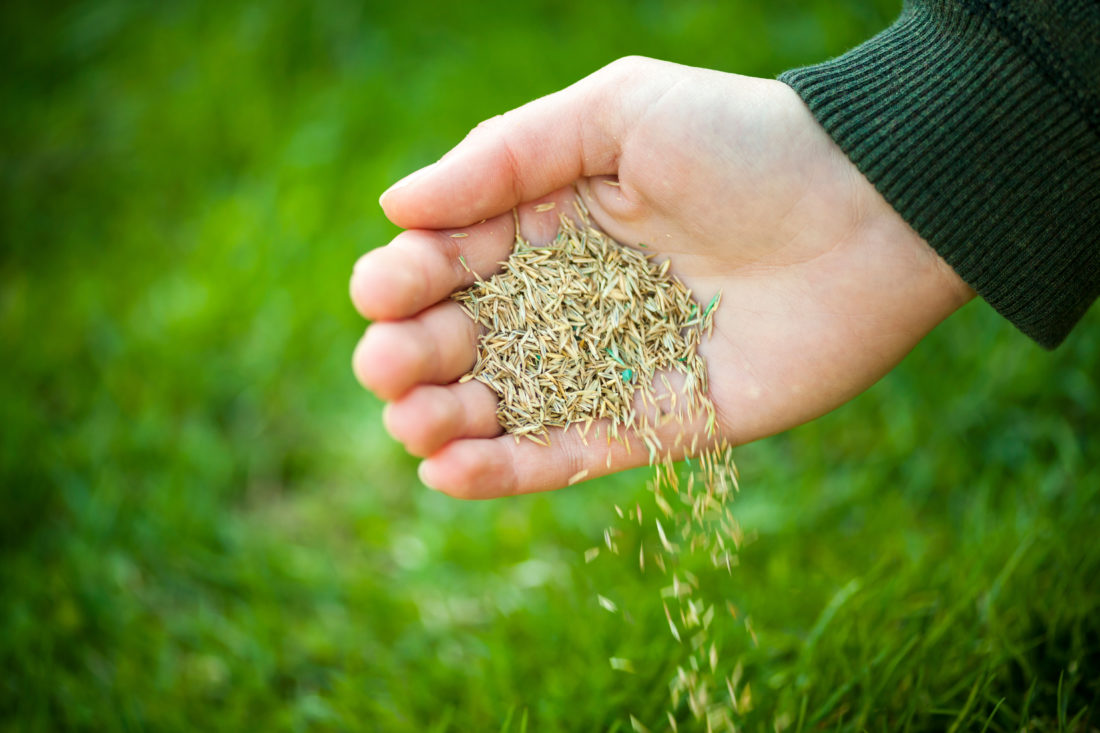August 17, 2023
Fall Lawn Care Tips
Time is of the essence when it comes to fall lawn care. Start fall lawn care once summer has ended and before cold, winter weather begins. Assess your lawn for summer damage and tailor your fall lawn care routine to address your lawn’s specific needs.
If possible, we recommend planting grass seed at least 45 days before the first fall frost to allow for proper germination before the winter hits.
Remove Excess Thatch
Thatch is a layer of organic matter consisting of stems, dead grass, and leaves, that builds up above the soil and below the crown of the grass blades. Thatch is a normal part of every lawn, but too much thatch can cause headaches for your yard.
Thatch buildup that is more than ½ an inch thick on your lawn can block access to air, water, and nutrients that grass seedlings need to grow. Excess thatch on your lawn can also harbor disease-causing fungi and insects that weaken and ultimately kill your grass.
Remove excess thatch by using a metal rake, but do not rake so vigorously that healthy green grass is removed from your lawn.
Aerate Compacted Soil
Compacted soil can inhibit healthy root development and limit the flow of oxygen to the soil. Soil must be loose and porous prior to seeding for grass seedlings to germinate and grow.
Core aeration removes soil plugs from your yard, therefore creating space in the soil for air, water, and necessary nutrients to travel to your lawn’s root system. You can manually do this with an aerating tool, or rent a gas-powered aerator.
If you’re looking for an alternative to heavy and unwieldy aerators, Jonathan Green Love Your Soil® naturally loosens compacted soil and increases necessary airflow to your lawn’s root system. Plus, you don’t need extra equipment, it’s easily applied with the same spreader you use for grass seed and fertilizer.
Overseed a Thinning Lawn
READ OUR FULL OVERSEEDING GUIDE HERE
If you want a thicker, greener lawn for spring, fall is the perfect time to overseed! The hot, summer sun has probably done a number on your grass, causing thin or dead spots. Take advantage of the fall season’s warm soil temperatures, ample moisture, and cool nights to thicken up a thinning lawn.
To prepare your lawn for overseeding, adjust your mower to the lowest setting and mow the area you want to seed. Be sure to bag clippings afterward. After mowing, rake the area with a metal rake to create grooves in the soil and remove dead grass and debris. This will help grass seeds make seed-to-soil contact and improve the rate of germination.
Or, if you’re starting from scratch on your lawn, check out instructions here!
Next, spread grass seed. For larger areas, spread seed with a rotary spreader. You should wait until your new grass grows to about four inches before mowing.
Feed Your Lawn
Fertilizing your cool-season lawn during fall is important to repair summer damage, supply it with nutrients to withstand the brutal winter months, and green up quicker in spring.
Cool season grasses like to be fertilized twice in the fall – one application in early fall (late August to September) and another in late fall (late October to November). The first application helps strengthen weak or brown spots from summer and the second helps to protect your lawn against winter disease. Make sure your second application occurs before the ground freezes.
Opt for a fertilizer rich in both potassium and nitrogen (the N and K in the NPK ratio found on the front of fertilizer bags) such as Winter Survival Fall Lawn Fertilizer. Nitrogen aids in plant growth and greener grass. Potassium builds stronger cell walls and root systems, which helps your lawn endure times of stress and harsh weather conditions.
Lawn Mower Height
As your grass is still growing throughout fall, it is important to continue to maintain a regular mowing schedule. Once grass growth begins to slow down, lower your mower height to about 2.5 inches. For the last mow of fall, which will usually be between late October to early November, drop your mower to 2 inches to discourage winter disease, such as snow mold.
Watering the Lawn
Fall weather signals the end of sweltering, summer heat and the need to frequently water your lawn. Rainfall in autumn results in less evaporation and more moisture so your lawn can sustain itself. While this means your grass needs less to drink in the fall, this doesn’t mean you should stop watering altogether. Water your lawn as needed, making sure it receives about one inch of water per week, including rainfall. Continue to water your lawn until the ground freezes.
Remove Leaves
While fall leaves may look picturesque on your lawn they can be harmful to your grass. Leaving piled-up leaves on your lawn blocks necessary sunlight for new grass seedlings. If your lawn is damp, wet leaves can encourage lawn fungus and kill the grass underneath.
Remove leaves from your lawn by using a leaf blower or a rake. For newly seeded lawns it is best to use a leaf blower, as a rake may damage or hinder new seedlings from growing. If you choose to rake, carefully glide the rake over the leaves when the soil is dry to remove them.

